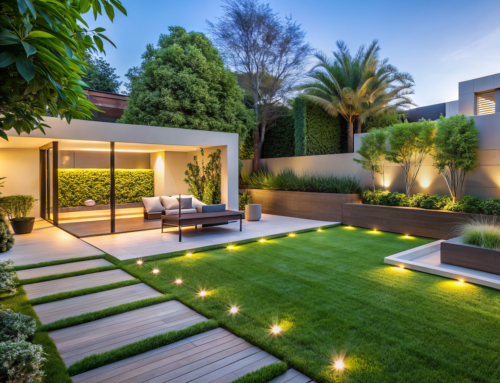Last Updated on December 11, 2024 by ReTurf
Artificial turf, often referred to as synthetic grass or fake grass, is an excellent way to create a low-maintenance and visually appealing outdoor space. With some careful planning, you can achieve a professional-looking result without overspending. This guide walks you through how to install artificial turf while keeping costs under control.
Why Choose Artificial Turf?
Artificial turf is a popular choice for homeowners and businesses alike because it offers a lush, green appearance year-round without the need for watering, mowing, or fertilizing. It is particularly beneficial in areas where water restrictions or challenging climates make natural grass difficult to maintain. While the upfront cost of artificial turf can be higher than seeding or sodding a lawn, the long-term savings in maintenance make it an economical option.
Planning Your Project
Measure Your Space
Start by measuring the area where you plan to install the turf. Accurate measurements are essential to avoid overbuying or underestimating the materials you need. Most artificial turf is sold by the square metre, so calculate your area carefully and add about 10% extra to account for trimming and adjustments.

Choose the Right Turf
Not all artificial turf is the same. Depending on your needs, you can find options with varying pile heights, densities, and colours. For a budget-friendly option, consider turf with a medium pile height that balances cost with a natural look. If you’re installing turf in a low-traffic area, lighter grades may suffice and save you money.
Prepare Your Budget
Before purchasing, set a realistic budget. Factor in the cost of the turf itself as well as other essentials like base materials, tools, and adhesive. Keep in mind that while opting for the cheapest materials might seem like a good idea, they could cost more in the long run due to reduced durability.
Installing Artificial Turf on a Budget
Gather Necessary Tools and Materials
To lay artificial turf successfully, you’ll need the following materials and tools:
- Artificial turf rolls
- Weed barrier fabric
- Crushed stone or gravel for the base layer
- Sand for leveling
- Turf adhesive or landscape staples
- A utility knife for cutting
- A stiff-bristled broom
Prepare the Ground
The first step is to prepare the ground where the turf will be laid. Remove any existing grass, rocks, and debris. Once the area is cleared, lay down a weed barrier fabric to prevent weeds from growing through the turf, saving you maintenance costs later.
Create a Stable Base
For a smooth and stable surface, spread a layer of crushed stone or gravel about 5-10 cm deep over the entire area. Use a tamper or plate compactor to compact the base thoroughly. This step is crucial for ensuring the turf sits evenly and remains durable over time.

Level the Surface
Spread a thin layer of sand over the compacted base and level it with a rake. Use a long plank or a level to check that the surface is even. This creates the perfect foundation for the turf, reducing the risk of lumps or uneven areas.
Lay the Turf
Roll out the artificial turf over the prepared base. Ensure the edges of adjacent rolls are aligned and that the grass blades are all facing the same direction for a natural look. Trim the edges carefully with a utility knife to fit the turf to the exact dimensions of your space.
Secure the Turf
Secure the turf using adhesive or landscape staples. For a budget-friendly option, staples can be an excellent alternative to adhesive, particularly for smaller installations. Make sure the edges are firmly attached to prevent movement or lifting over time.
Add Infill
To keep the turf blades standing upright and improve durability, spread a layer of sand infill evenly across the surface. Use a stiff-bristled broom to brush the infill into the turf, working against the grain of the grass for the best effect.
Tips for Saving Money
- DIY Installation: Labor costs can add significantly to your expenses. Installing the turf yourself is a great way to save money, especially if the area is manageable.
- Buy in Bulk: Many suppliers offer discounts for bulk purchases. If you’re covering a large area, buying more at once can reduce the cost per square metre.
- Choose Economical Materials: Opt for mid-range turf and standard base materials that balance cost and durability.
- Repurpose Tools: Borrow or reuse tools where possible to avoid additional costs.
- Plan for Longevity: Spending slightly more on quality materials can prevent costly repairs or replacements later on.

Maintaining Artificial Turf
Once installed, artificial turf requires minimal maintenance. Brush the surface regularly to keep the blades upright and remove debris. Rinse the turf occasionally with water to keep it clean, and check for any signs of wear at the edges. Proper care ensures your turf looks great for years to come.
Artificial turf offers a practical and cost-effective way to enhance your outdoor space. With careful planning, the right materials, and a DIY approach, you can create a beautiful, low-maintenance lawn without overspending. Whether you refer to it as artificial turf or fake grass, this solution combines convenience with long-term value, giving you a lush, green area to enjoy for years to come.



